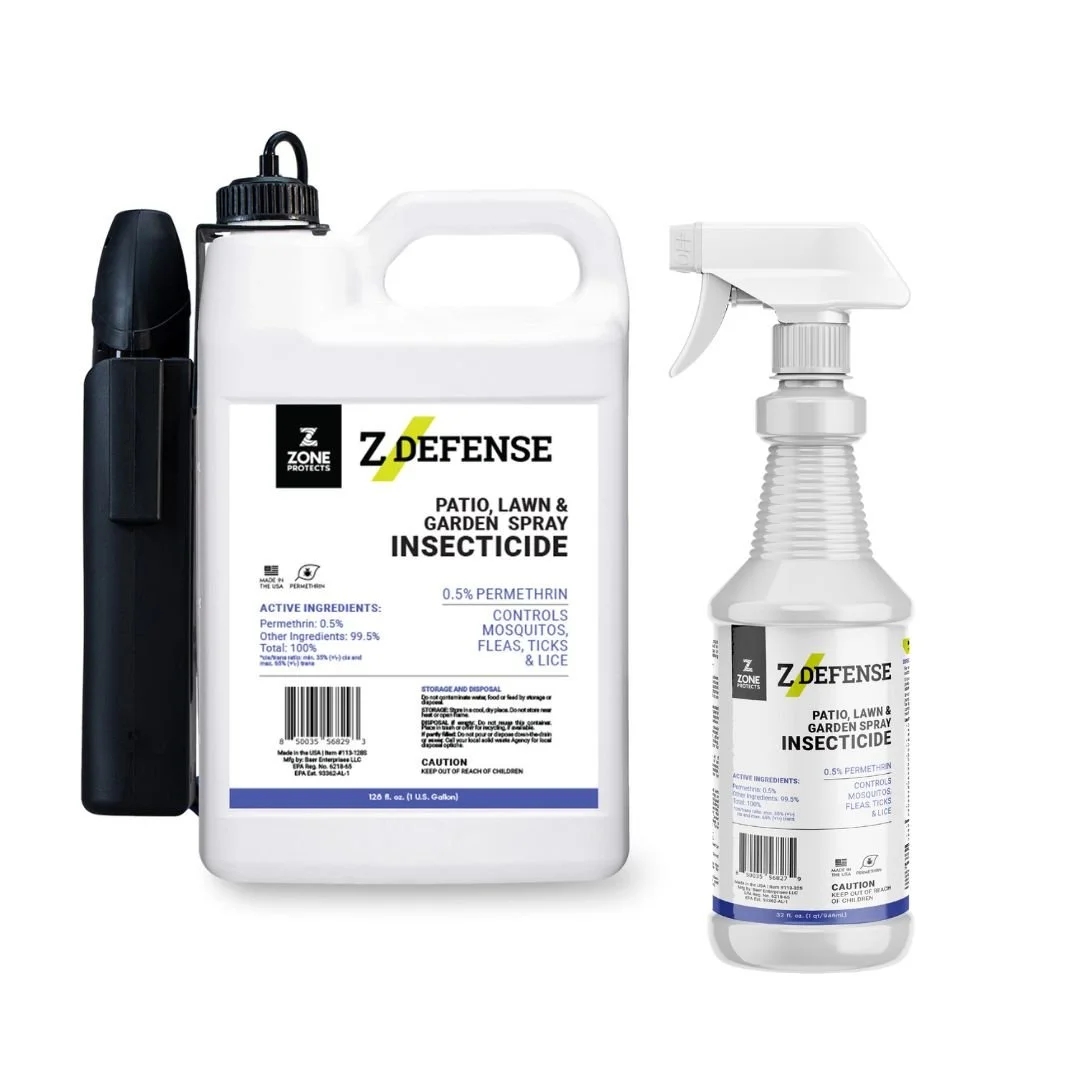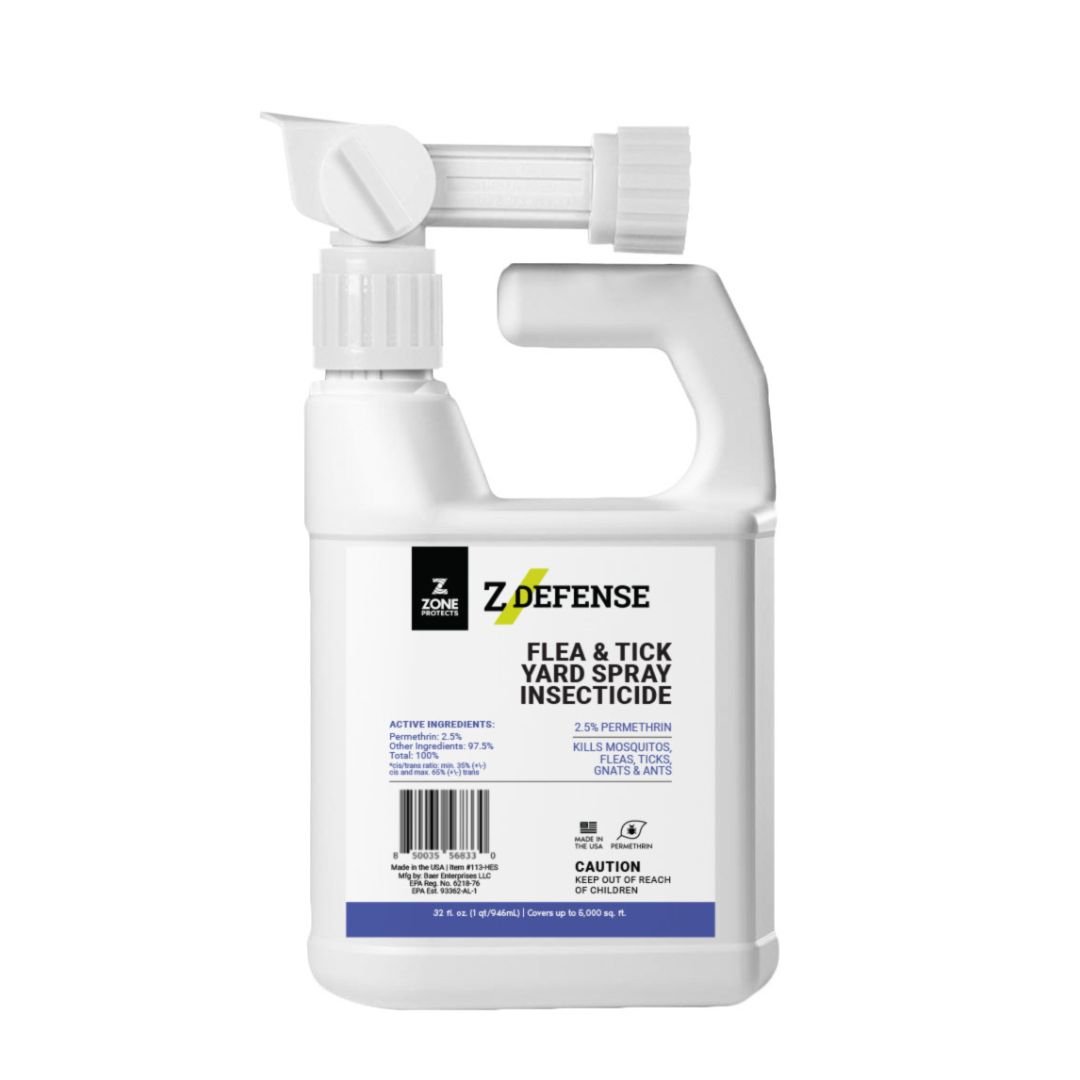Want a Pest Free Yard this Season?
Are you tired of pests turning your yard into their own oasis? One way to keep your yard bug-free is by using environmentally friendly insecticide sprays. But when's the best time to spray your yard for bugs?
Look no further! We’ve got your
Seasonal Guide to Spraying for fleas, ticks, ants & other bugs
Spring Time Prevention
In spring, pests emerge from dormancy and eggs hatch, making it essential to spray your yard early to prevent breeding and a large infestation. Luckily, our Z-Defense Yard Spray Insecticide kills pests on contact and provides residual repellency.
Spraying outdoors to kill dormant eggs and nests for ants, flies, and fleas is an important part of having a bug free yard this summer. Begin by using an insect spray specifically designed to target these three pests.
Be sure to spray around doorways, windows, and any other potential entry points into your home. Additionally, be sure to pay particular attention to any areas that offer shelter such as wood piles or leaf litter where pests may nest. If possible, try to avoid spraying directly onto flowers or budding plants as much as possible.
Summer Time Control
As temperatures rise in summer, so do pest populations. Another treatment early in summer can catch any pests hiding in your vegetation and prevent common summer pests. A second application in early summer can do wonders to keep these pesky bugs away, especially in peak growing seasons.
Spraying your yard in the heat of summer can be an effective way of getting rid of mosquitos, fleas, and other biting insects including ticks. Mosquitoes are attracted to standing water and warm temperatures, so spraying the entire yard with a bug-repellent solution will help reduce their presence.
Change over the water regularly in your bird feeders or fountains to ensure you don’t have a breeding ground. By doing this you can create a mosquito-free zone around your patio, making it the perfect place to hang out for a summer BBQ!
Fall Time Protection
Have you ever noticed how every fall, the spiders seem to move inside? Bugs, just like us, are looking for a warm place to over winter.
Fall is the ideal time to spray the perimeter of your house and create a protective barrier. An application to the common entry points and your foundation (about 3 feet up from ground level) will deter pest activity inside your home. No more spider webs in the corners this winter! This technique will also reduce the risk of cockroaches and stink bugs visiting your home.
Where to Spray for Bugs in Your Yard?
When it comes to keeping pesky bugs at bay, there are a few critical locations around your home and yard that you should target during your spraying routine to ensure the best results.
First, let's start with the perimeter of your home and yard. Apply spray in this area to eliminate pests on contact, and enjoy longer-lasting protection with the residual repellency left behind. When you spray the perimeter, be sure to give extra attention to any areas where pests tend to gather, like entryways or dark corners.
Next, move on to spraying your vegetation. This includes your shrubs, bushes, and plants. Vigorously apply the spray, making sure to coat your vegetation until it begins to run off. Take care to spray the underside of leaves too, as pests like to hide underneath them. With comprehensive vegetation spraying, you’ll be able to get rid of bugs that were already lurking around and prevent any future infestations.
If you have a garden, you know how important it is to protect it from bugs that could ruin your hard work and prevent your plants from thriving.
Last but not least, don't forget to spray the areas around your porch and deck. Mosquitoes are tricky little creatures that love to hide from the sun, especially in areas with dense vegetation. Spray these spots thoroughly to deter mosquitoes from making a home in your yard.
By utilizing these tips, you'll be able to keep bugs at bay and enjoy a pest-free environment in and around your home, making for a much more enjoyable outdoor lifestyle!
Here are ten top tips for spraying your yard for bugs to achieve effective bug control:
Identify the specific types of pests you want to target and choose the appropriate insecticide for the job.
Read the label carefully and follow all instructions for mixing the insecticide with water.
Wear protective clothing, including long sleeves, pants, gloves, and a mask, to avoid contact with the insecticide.
Choose a calm, dry day without wind to apply the insecticide to avoid drift and ensure even coverage.
Focus your efforts on areas where pests are likely to breed or congregate, such as standing water, tall grass, and trees.
Use a sprayer with adjustable nozzles to reach difficult areas, like under bushes and in tight spaces.
Apply the insecticide in a slow, sweeping motion to avoid over-spraying or under-spraying any particular area.
Avoid spraying flowering plants or areas where honeybees are present to prevent harming beneficial insects.
Keep children and pets away from the treated areas until the insecticide has dried completely.
Regularly monitor the treated areas and reapply the insecticide if necessary to maintain effective bug control.


